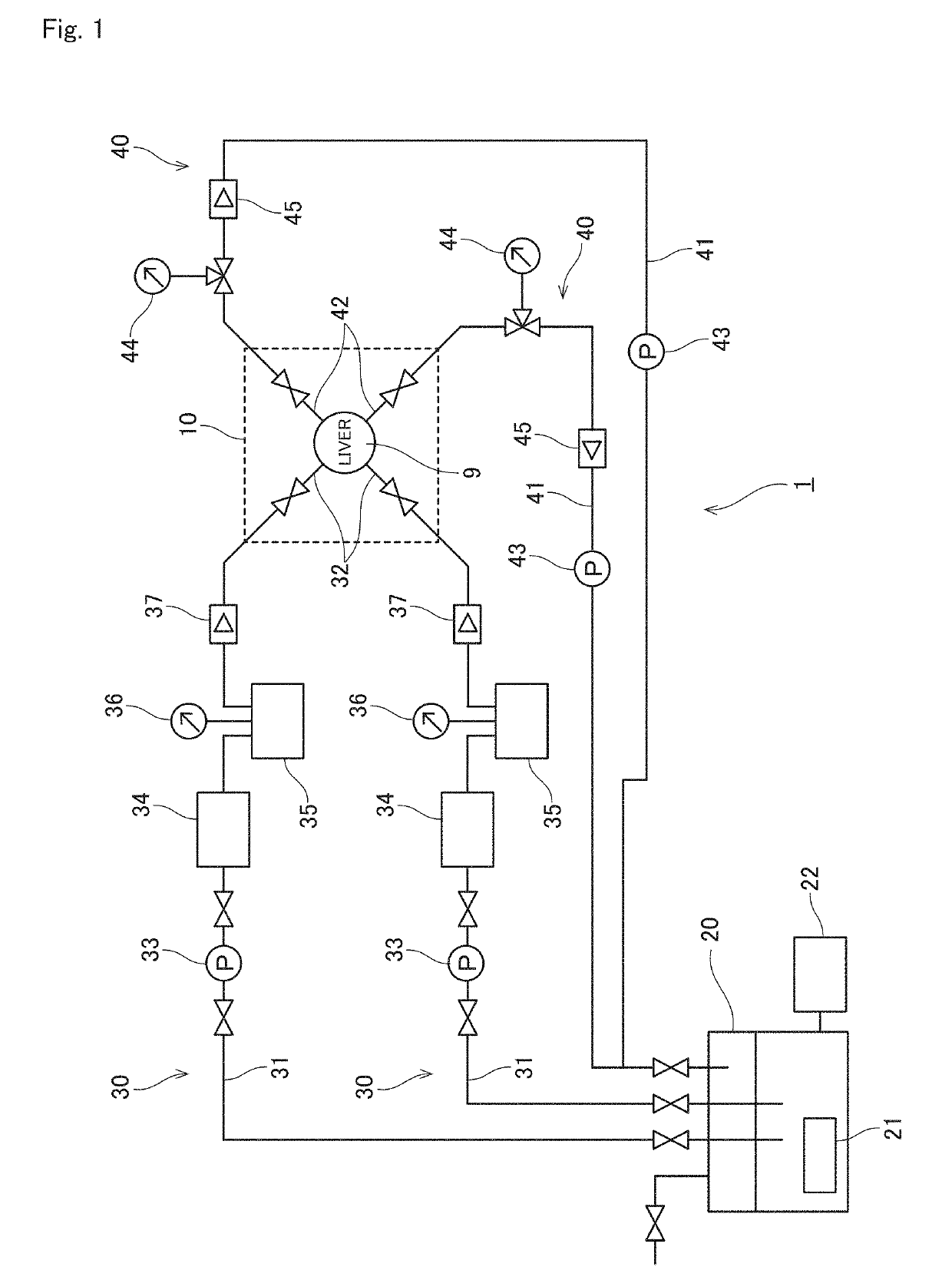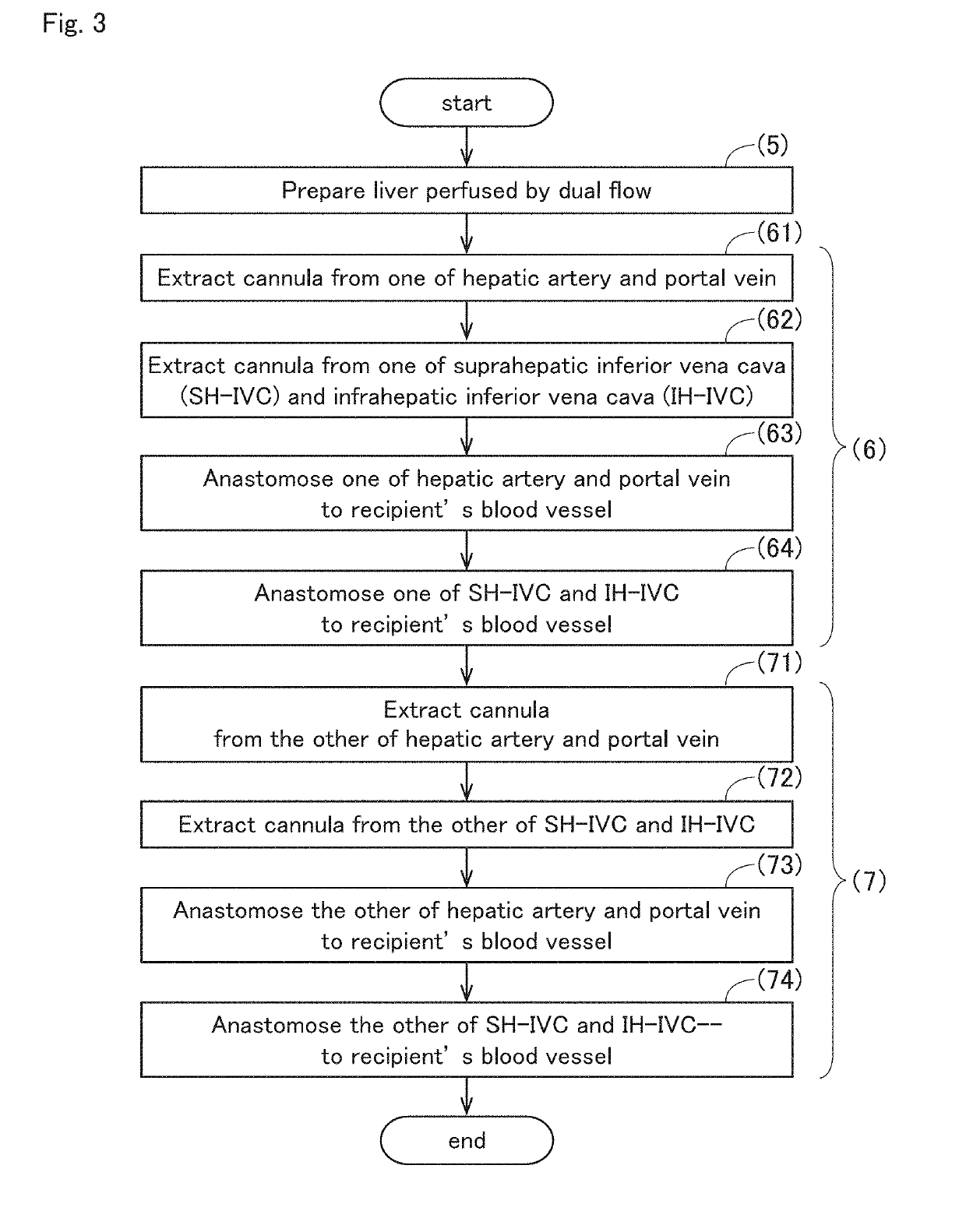Perfusion device for liver graft, and liver removal method and liver transplantation method using the device
a technology of liver graft and perfusion device, which is applied in the field of liver removal method and liver transplantation method using the device, can solve the problems of limited organs that can be provided, shortage of donor organs, and serious problems in transplantation medical care, and achieve the effect of shortening the time length of liver graft 9, suppressing the onset of disorder in liver graft 9, and improving the success rate of liver transplantation
- Summary
- Abstract
- Description
- Claims
- Application Information
AI Technical Summary
Benefits of technology
Problems solved by technology
Method used
Image
Examples
Embodiment Construction
[0054]A design example of a perfusion device, a liver removal method and liver transplantation method using the perfusion device, and examples of liver transplantation experiments according to the present invention are described below. In the present application, donors and recipients may be humans or non-human animals. Also, non-human animals may be rodents such as mice and rats, ungulates such as pigs, goats, and sheep, non-human primates such as chimpanzees, and other non-human mammals, and may be nonmammalian animals.
[0055]
[0056]A device according to the present invention is described with reference to FIG. 1 that shows a design example of a perfusion device 1 for a liver graft 9 as one embodiment of the present invention.
[0057]The perfusion device 1 in the example of FIG. 1 includes a bioreactor area 10 that stores the liver graft 9, a perfusate reservoir 20, two perfusate inflow pathways 30, and two perfusate outflow pathways 40.
[0058]In the bioreactor area 10, a container cap...
PUM
 Login to View More
Login to View More Abstract
Description
Claims
Application Information
 Login to View More
Login to View More - R&D
- Intellectual Property
- Life Sciences
- Materials
- Tech Scout
- Unparalleled Data Quality
- Higher Quality Content
- 60% Fewer Hallucinations
Browse by: Latest US Patents, China's latest patents, Technical Efficacy Thesaurus, Application Domain, Technology Topic, Popular Technical Reports.
© 2025 PatSnap. All rights reserved.Legal|Privacy policy|Modern Slavery Act Transparency Statement|Sitemap|About US| Contact US: help@patsnap.com



